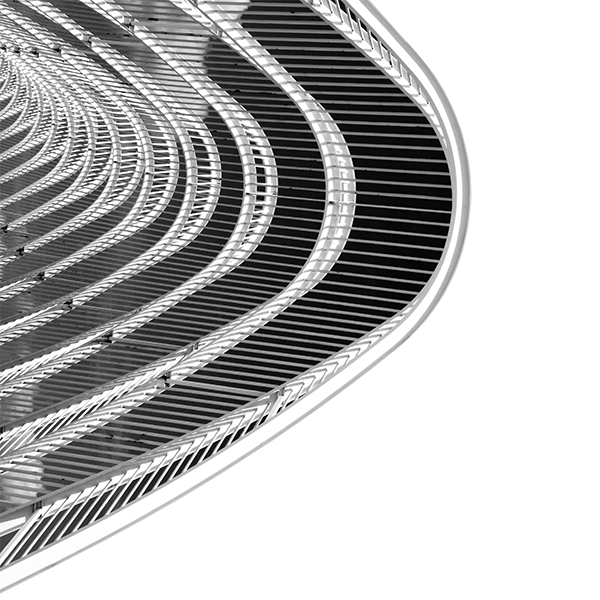Radiation Hardening
Establishing resilience and longevity of electronic systems, particularly in extremely harsh environments, is crucial to successful projects and missions. Exposure to high levels of radiation can have catastrophic effects on electronic systems, leading to data corruption, system failures, and even total operational breakdowns. Radiation hardening makes certain that electronic devices can operate reliably in harsh environments.
Radiation hardening, or rad-hard, is the process of making electronic components or systems resistant to damage or malfunction caused by ionized radiation. This is especially critical for applications in space, nuclear power plants, military operations, and high-altitude aviation, where exposure to radiation is inevitable.
EMA provides comprehensive radiation hardening consulting services, ensuring optimal resilience for every aspect of your project. Our team of experts utilizes Ansys Charge Plus to predict the behavior of your systems under radiation exposure.
Our Offering:
We specialize in:
- Monte Carlo Particle Transport
- Modeled physics:
- Particle tracking
- Ionization
- Scattering
- Bremsstrahlung
- Energy deposition
- Charge deposition
- Using meshed CAD geometries
- Particle sources:
- Most particle types including electrons, protons, photons, neutrons, and ions
- Multiple geometries such as spherical, planar, localized surfaces
- Mixed beam definitions incorporating many species/many directions
- Any energy spectrum and time-dependent fluence
- Result quantities:
- Charge Density
- Total Ionizing Dose (TID)
- Total Non-Ionizing Dose (TNID)
- Linear Energy Transfer (LET)
- Flux Density (within user-specified energy bins, or aggregate)
- Modeled physics:
- Ray-Tracing Dose Estimation
- Produces estimated surface maps of ionizing dose
- Surface Charging
- Internal Charging (Monte Carlo with electromagnetics)
- Dielectric breakdown
- System-generated EMP
Click the button below to learn more about our radiation hardening services and how we can support your projects.
Ray Tracing Sector Analysis Theory
A core problem in radiation hardening analysis is the prediction of cumulative ionizing dose in electronics while exposed to the space environment. This can be calculated using ray tracing simulation.
Ray tracing sector analysis assumes that space provides an isotropic radiation environment, meaning high-energy radiation affects platforms equally from all directions. Under these conditions, the thickness of shielding in a particular direction mostly determines the incident fluence from a given angle on internal structure.
From an observation point, we can trace a large number of rays outward from through the three-dimensional geometry. By keeping track of all the intersections of a ray with the geometry, we can reduce the full 3D geometry down to a shielding distribution, which is total thickness in a direction theta phi, deq(Θ, φ). Then, using a solid-sphere dose-depth curve, D(deq), integrate over solid-angle to get dose estimate.
TID= ∫4π D (deq(Θ, φ) ∂Θ∂ φ
There are two main schemes for propagating rays. Slant is when rays propagate without changing direction. It is appropriate for particles or track lengths that do not scatter many times and is relevant to spacecraft analysis. Charge Plus uses this method. The alternative to that is norm propagation where when a ray intersects with the geometry you propagate it along the normal to that surface. This method is appropriate for diffusive propagation (thick shielding, scattering dominant). Figure 1 shows both methods.

Ray Tracing Simulation
You can use Charge Plus for ray tracing simulation. This is an example we have a simple electrical board inside of an aluminum enclosure on a satellite. We start by clicking on the ‘ray tracing’ option in the workflow ribbon. Then we set up materials and detectors.
In Charge Plus, a selection of surfaces in the geometry forms detectors, creating a tessellation meshed with triangles. The software traces rays from the center of each of those triangles. This allows us to automatically sample a surface instead of having to generate individual detectors for each point that you want to sample. Figure 2 displays the tessellation parameters you can change, including the max edge length. You can also add an additional amount of virtual shielding to your detector. You do not need to associate detectors with the physical geometry, you can use Discovery’s CAD drawing tools to create surfaces anywhere in your model and attach a detector to it.

After you set up everything, click on the ray tracing button again. This gives you customization options (Figure 3), including the number of rays you want to sample for each origin and if you import your dose depth curve. Once you click the check, Charge Plus generates the mesh and starts to trace the rays.

Results
You can find the results at the bottom of the tree on the right-hand side. One of the options is the ray tracing visualization option. This outlines the contours for the detectors you set up. You can see this in Figure 4. In that image, the orange and red colors next to the intentional hole in the enclosure indicate large hot spots of dose. This shows that these areas do not encounter much shielding.

You can also see the ray tracing tracks. Use the ‘particle track’ tool in the top ribbon to import track files. When we perform ray tracing, we output a fixed number of the least shielded rays sampled for each detector. You then render them by importing the file and then the least shielded rays will appear on the geometry, Figure 5.

You can also use this ray tracing analysis in a complete workflow for shielding analysis.
For more details about our ray tracing capabilities, watch our Solving Electromagnetic Solutions webinar GPU-Accelerated Ray Tracing for Radiation Dose Mapping by clicking here.
Contact us by clicking the button below to see how we can help you.

